Finspan Board Game Review
Disclaimer: Wingsplain received a free review copy of Finspan. We thank Stonemaier Games for this generous opportunity.
There Will Be Comparisons Drawn
When I set out to write this review, it started just like any other review I’ve done. Talk about the game, draw some conclusions, and give my opinions. However, as I wrote, this review of Finspan started to draw heavily on comparisons to Wingspan and Wyrmspan.
Being the third game in a series of games called the “World of Wingspan,” it’s hard not to draw comparisons to what came before. As a result, my Finspan review feels a bit different than other reviews I’ve done in the past, at least it does to me. I feel like this is not just a review of Finspan, but a review of an evolving game system.
The Theme of Finspan
In Finspan, you take the role of a marine researcher seeking to find and observe an array of aquatic life. You will dive down into the ocean, passing through the colorful Sunlight Zone, the ghostly Twilight Zone (gulp), and the pitch-black Midnight Zone.
The theme of Finspan is woven around real-world fish and their various ecosystems. As with Wingspan, I am drawn into this world of animals, and every card is an interesting component to the game. The artwork and trivia on the cards help to weave a compelling experience.
I found it interesting to discover how certain fish align with other fish of the same type and how they prefer certain sections of the ocean. Alien-looking sea monsters hang toward the bottom of the ocean. Sailfish and Swordfish seem to be big plays with a lot of packed in value. Trout and Sturgeon mostly want to interact with the top row of estuary spaces on the boards.
Thematic consideration has definitely been given to how the fish behave in the real world, and certain in-game mechanics seem to be tied into the powers of certain families of fish.
Finspan Is A Light Engine Building Game
Finspan is less of an engine-building game than Wingspan is. “If Activated,” brown powers will provide some important resources during your Finspan game, but frequent “engine spamming” won’t be a thing like you may experience with a grassland egg spam engine or a wetland mass tucking engine in Wingspan.
There are When Played and Game End powers in Finspan that will lay eggs on multiple fish of various sizes or on fish belonging to certain habitats. This further reduces the effectiveness (and necessity) of egg-producing strategies centered around brown power activations over multiple turns.
You’re going to have to find an optimal blend of playing fish and going on dives (activating your engines). You’re not going to be able to really focus on just one thing. This style of gameplay is reminiscent of Wyrmspan, which also takes measures to limit engine spamming strategies.
The Flow of the Game
Finspan sets players up for success right out of the gate. Starter cards, three Feeder Fish, one young, and two eggs provide you with all the fuel you need to get spawning. You never have to discard anything, which eliminates feel bad moments and tough decisions that can slow down the game before it’s even started.
This is a welcome change of pace, and it provides some unique identity for Finspan to separate itself from its predecessors. This snappy, fast, and focused gameplay feels really good in comparison to Wingspan and Wyrmspan.
Finspan’s version of Rounds are called Weeks. There are still four of them, but they are much more friendly than Wingspan’s round goals, and they feel just as important to chase. Week Goals allow players to score a set amount of points for each qualifying event. The person who wins the Week Goal will get an added cherry on top in the form of three extra points.
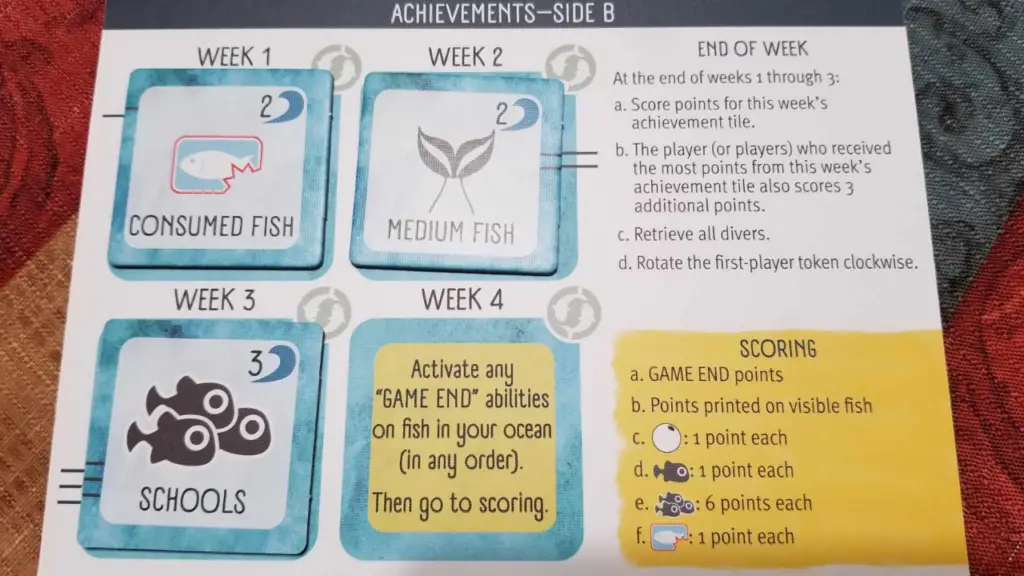
In practice, I feel like Finspan has the better system here. There’s no need to add round goal points together and divide points between players who tie, which gets annoying to deal with sometimes. Everyone just adds up their stuff, and the person with the most gets an extra three points.
Every player who participates in the Week Goals will get points. In the Wingspan/Wyrmspan round system, games with high player counts may find some players coming away with zero points, despite participating in the round goal. Finspan manages to eliminate another “feel bad” moment here and create another instance where its systems set itself apart from the other Span games.
As your game develops week to week, potential combos will start to emerge as you identify many possible synergies that your fish can have. This will extend from the mid-game into the late game as you start to make preparations for your Game End yellow powers.
In a unique twist, Finspan’s week four goal is the trigger of “game end abilities.” These are yellow powers that let you lay eggs or play more fish. There isn’t an actual goal tile like the other weeks have. So if you want to participate in the week four “goal,” you’re going to want to find a nice yellow powered fish to play. In effect, these game-end abilities function like the “end of round” powers from Wingspan and Wyrmspan.
Is Finspan Less Complex Than Wingspan?
Finspan is marketed as a “less complex” version of Wingspan, and I think that they did succeed in creating that, but don’t let that fool you. Less complex isn’t a bad thing, and it doesn’t mean Finspan is a simple-minded game.
Wingspan will have you looking many turns into the future and speculating on the potential point value of compounding engine activations, but Finspan will keep your focus on the short-term synergies currently in your hand and on your board. You may look out three turns or so into the future in order to properly set up your When Played and Game End powers that let you play more fish or lay eggs across multiple fish. That’s about as complex as Finspan gets.
The absence of dice reroll rules, “once between turns” power triggers, and bonus cards helps to peel away layers of complexity and planning in order to keep the focus of your game on the fish, the week goals, and your game end powers.
Despite less rule complexity, Finspan is a game of Iconography. There was a bit of a barrier for us as we learned how to “speak Finspan”. The rulebook really is streamlined and honed to a fine point, and this is something I’ve not seen from a Stonemaier product before. At first, I was annoyed with how the rulebook felt a bit empty, but after a while, I started to understand what I was dealing with.
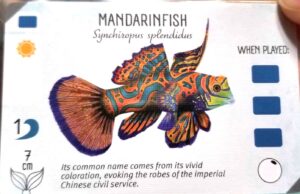
At times, you have to sit and stare at the symbols and cross-reference to the rule book. I think my Wingspan experience definitely helped me here, as I was able to draw on that to answer questions that came up during our games.
“Play Another Fish” (PAF) powers are a good example of this. My wife’s first reaction was that you got to play the extra fish onto the board without additional cost. This immediately stood out to me because that’s not how it works in Wingspan. I checked the rules, and the Ability Iconography section came to the rescue here and told us exactly how to handle it.
Once you play a couple of games, it will all come together nicely. If you have an experienced player teaching you, things will go a lot smoother. This is true of any game, of course,e but it feels especially true for Finspan. If you all know how to play Wingspan, the onboarding process for Finspan should be very quick indeed.
The Components of Finspan
Finspan’s stock components serve their purpose perfectly. The fish tokens look fine. Red and Yellow work well on a playmat of many shades of blue, but the orange egg tokens somehow clash with the rest of the game. Even so, I think there are a lot of fish that lay orange eggs, so this might be on point thematically. I’m not a fan of the color scheme of the diver meeples, but my wife appreciates the pink ones, as many games we play don’t offer her that choice (pink is her favorite color).
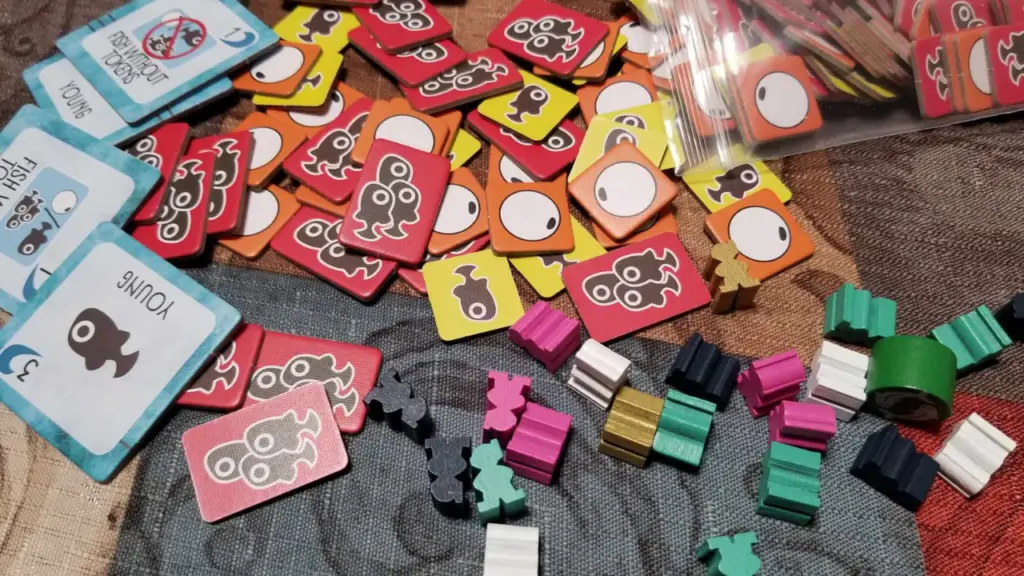
Finspan is easy on my wife’s vision. One of the problems she encounters with the games we play is small rules text on cards that sit several feet away on the table. Since Finspan is a game of symbols, it’s much easier for her to look and understand without having to pick something up and read it. This quality of life improvement is another way that Finspan separates itself from its predecessors while simultaneously reducing game complexity.
The player aid cards are great. Large and easily readable with important information. In fact, the front and back are sections lifted straight out of the rulebook. I think this is the most useful player aid card I have seen from a Stonemaier product. I hope they take what they learned from Finspan and apply it to future games.
Last but not least, the fish cards themselves look awesome. Their style invokes feelings of Wingspan with their “field guide” look, which is what they were shooting for. Mission accomplished. They’ve packed a lot of information onto these cards, along with important iconography and meaningful flavor text.
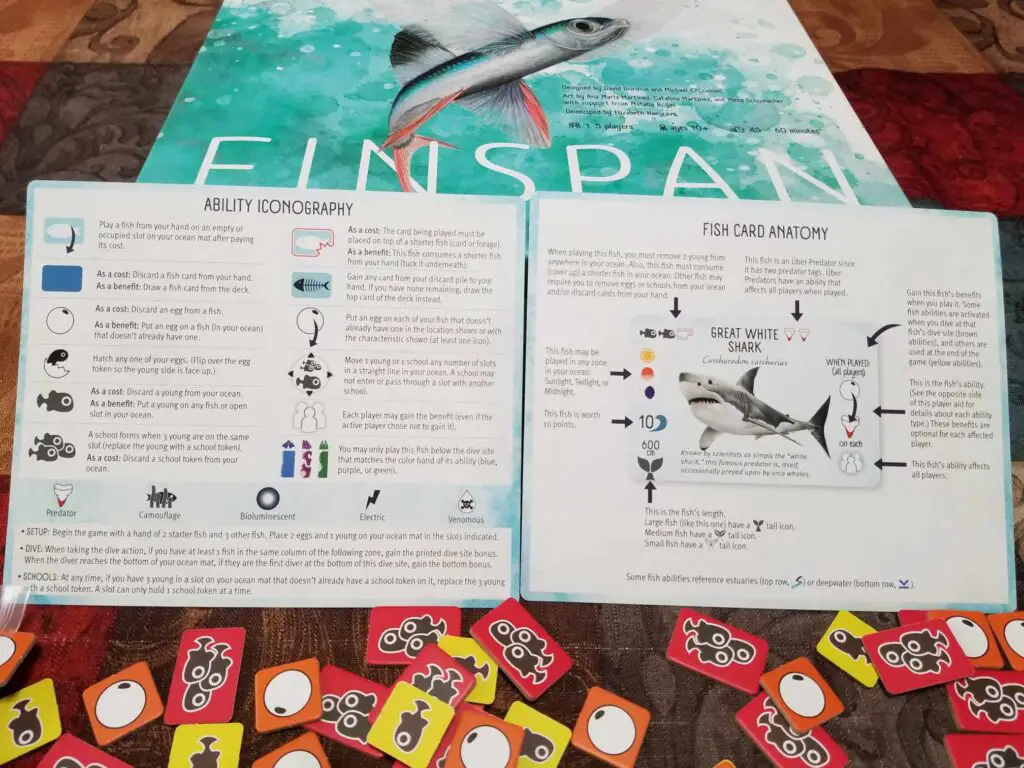
The Cost of Finspan
At the time of this writing, Finspan is on sale for $45.00 USD directly from Stonemaier Games. It is normally $50.00 USD. As usual, Stonemaier Champions receive a 20% discount on all purchases. It’s also available on Amazon.
I think this is a good price point for a very fun game that looks good and presents a unique table with its vertical play mats. I think they did a good job of making a coherent, fun, and streamlined game for the price of $50.00 USD.
It feels like everything included is useful. There aren’t any elements of the game that feel “tacked on” or out of place, and there isn’t anything that feels underrepresented that might have made a better target for production.
What Do I Think About Finspan?
I really enjoy Finspan, and I look forward to many more plays. At this moment in time, I think I like this a bit more than Wyrmspan, which is a good game that I’m happy to have in my collection. My wife confirmed that she would order her favorites as Wingspan >Finspan >Wyrmspan.
It’s been a while since I’ve felt this enthusiastic about getting a game back to the table, and that says something. Finspan just feels much more digestible, streamlined, and it’s easier to convince my wife to play. I look forward to sharing this game with my friends in the future.
Leading up to the game’s launch, I was reading the design diaries, looking at all the images, and feeling anticipation to play. I don’t think I felt this way about Wyrmspan. I wonder if the theme of real-world animals has anything to do with this. I was also motivated to create my first draft of a tier list, something that I wasn’t inclined to do for Wyrmspan.
We didn’t sit and play Finspan for nine hours straight like we did when we first played Wingspan, but like I mentioned in my Wyrmspan review, that might be an unfair comparison to make because Wingspan was such a new concept to us that it just sucked us in.
I don’t miss bonus cards at all. I felt the same way with Wyrmspan. I did miss “once between turns” pink powers in Wyrmspan, but I don’t miss them in Finspan. There is so much sharing of eggs going on that I don’t even feel the absence of pink powers in practice. I also don’t miss the bird feeder or the structure of Wingspan’s round goal system. I didn’t think about “end of round” powers until I came to the realization that “game end abilities” function just like an “end of round” power in Wingspan and Wyrmspan (albeit at the end of week four only).
Finspan justifies its existence with streamlined systems and a unique presentation. It does exactly what it needs to do and exactly what it wants to do. It does an excellent job of setting itself apart from Wingspan and Wyrmspan. I can’t wait to see how they incorporate expansions in the coming years and further establish Finspan’s unique identity.
Thank you for reading our Finspan Board Game Review. If you would like to read our other reviews, please check out our Reviews Page.
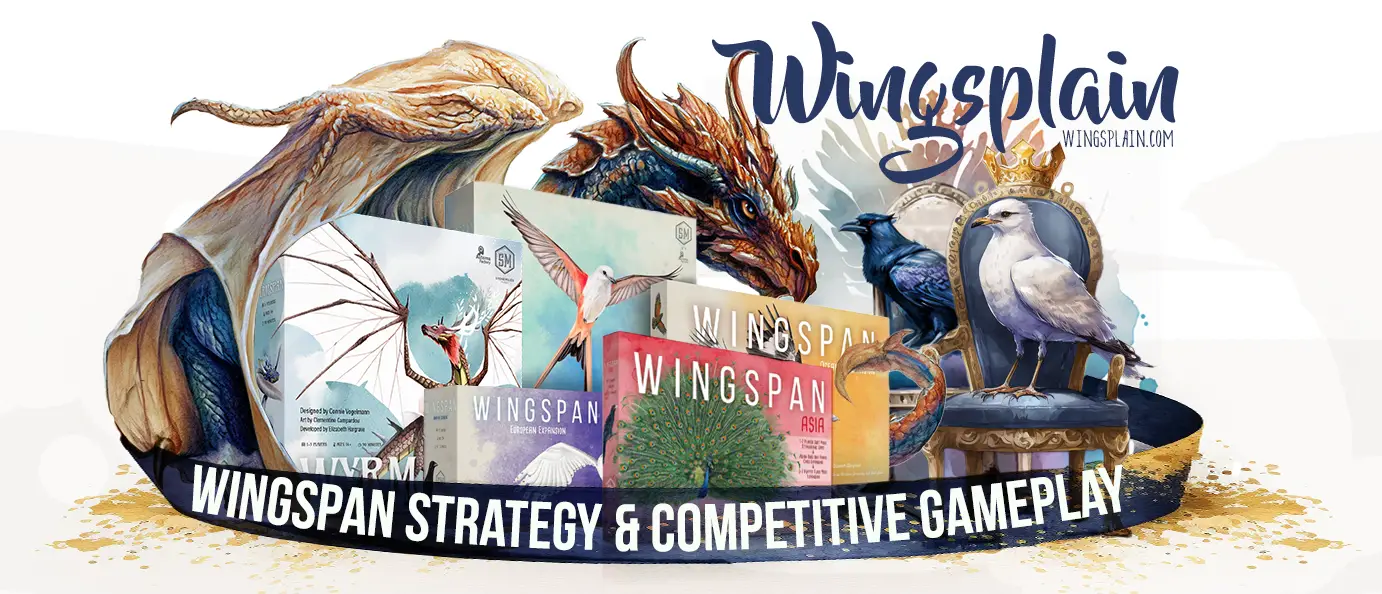
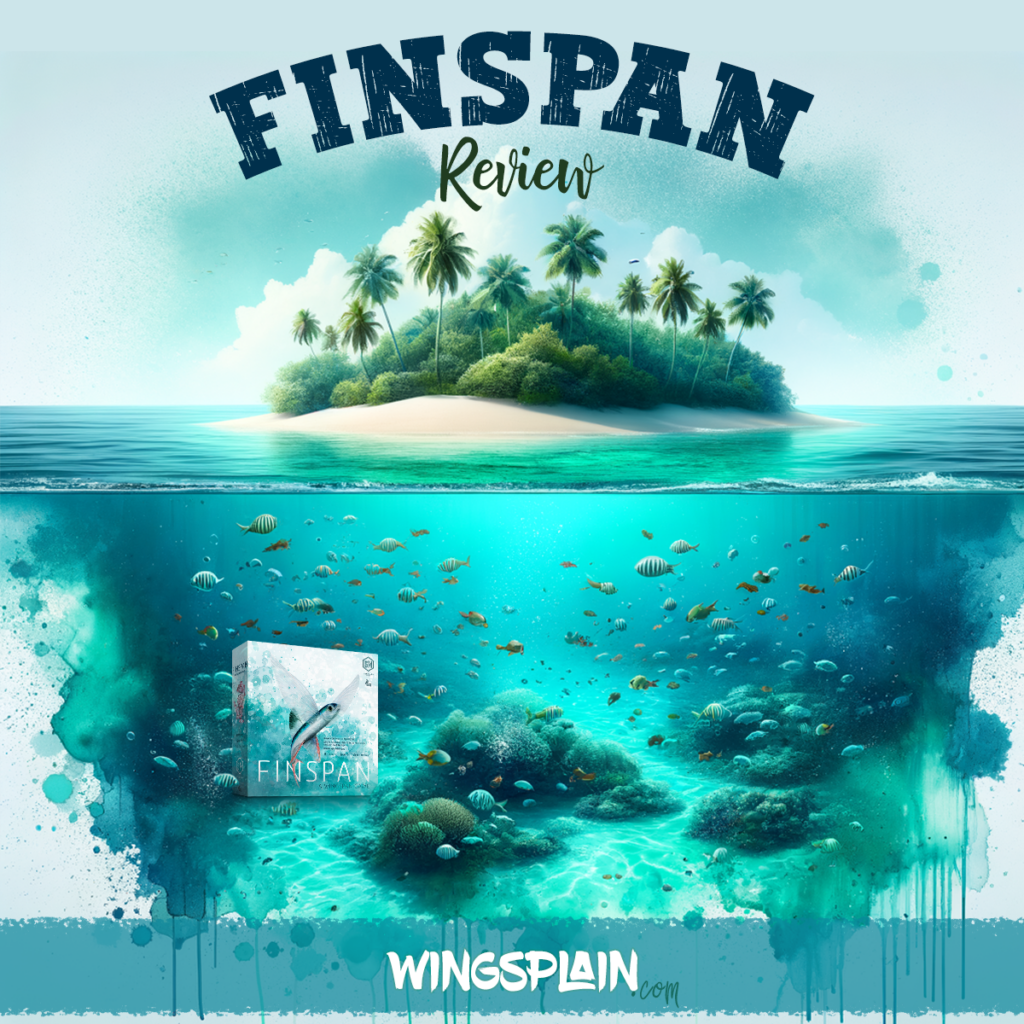

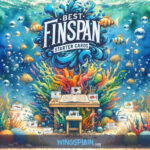
Is this game suitable for kids
Yes, I think Finspan would be great for a family game night.
I’m really happy they went back to natural creatures instead of fictional. 🐟🦜😊
I can’t wait to see what expansions have in store for us.
For Wingspan I believe the base game was viewed as good enough so that the first expansion only added more of the same stuff for the sake of variety, instead of introducing new mechanics. Do you think the first Finspan expansion will just be “more of the same stuff”, or will it be the span-game they experiement a bit more with?
Hello Steinar,
It’s really hard to say what’s next for Finspan. Being the less complex game, I don’t expect Finspan to get too crazy with new mechanics. I also know that if the designers have a really cool idea, Stonemaier won’t stand in the way of that. Jamey Stegmaier has expressed that sentiment with Elizabeth Hargrave and Wingspan. I think they are going to really focus on maintaining each Span game’s unique identity.